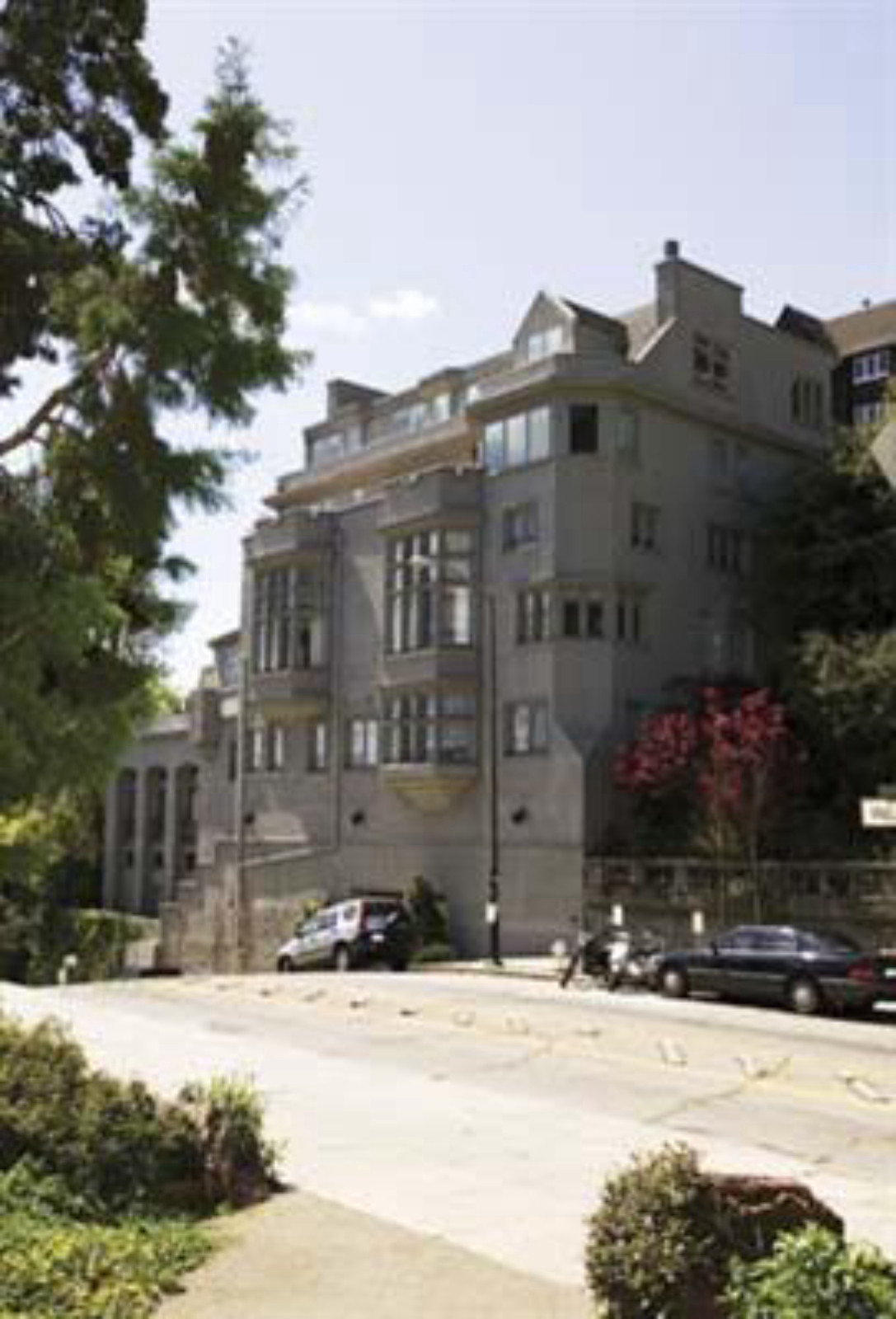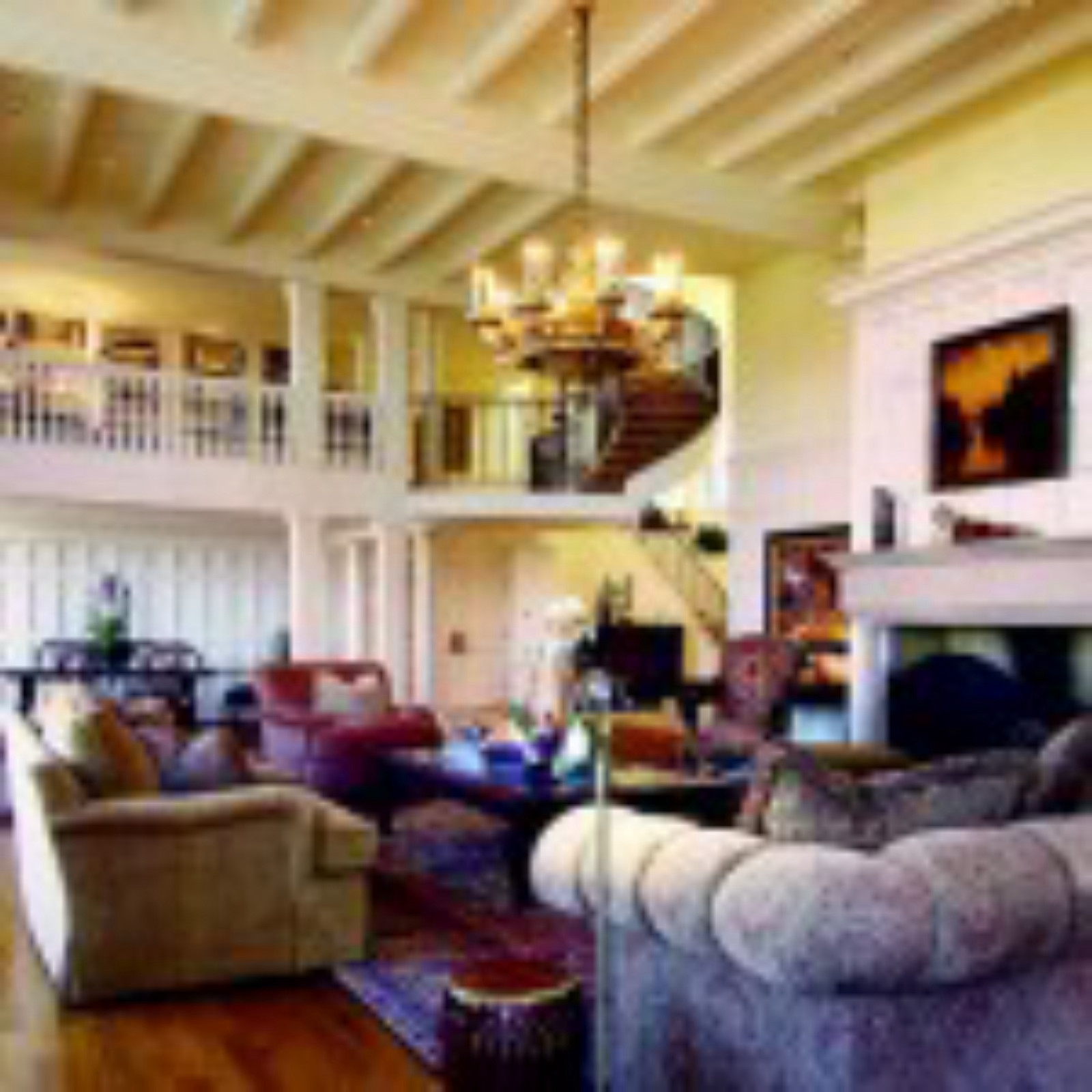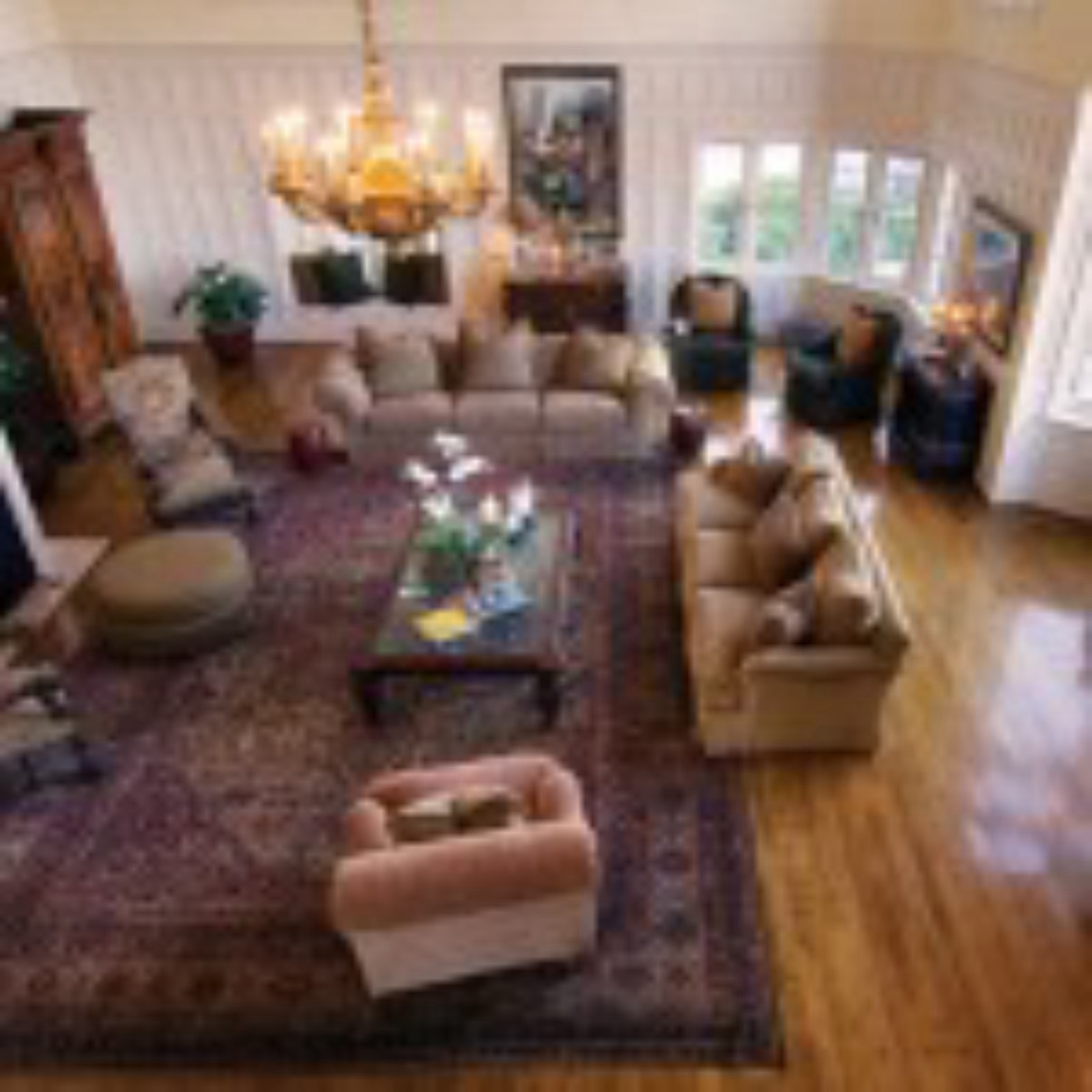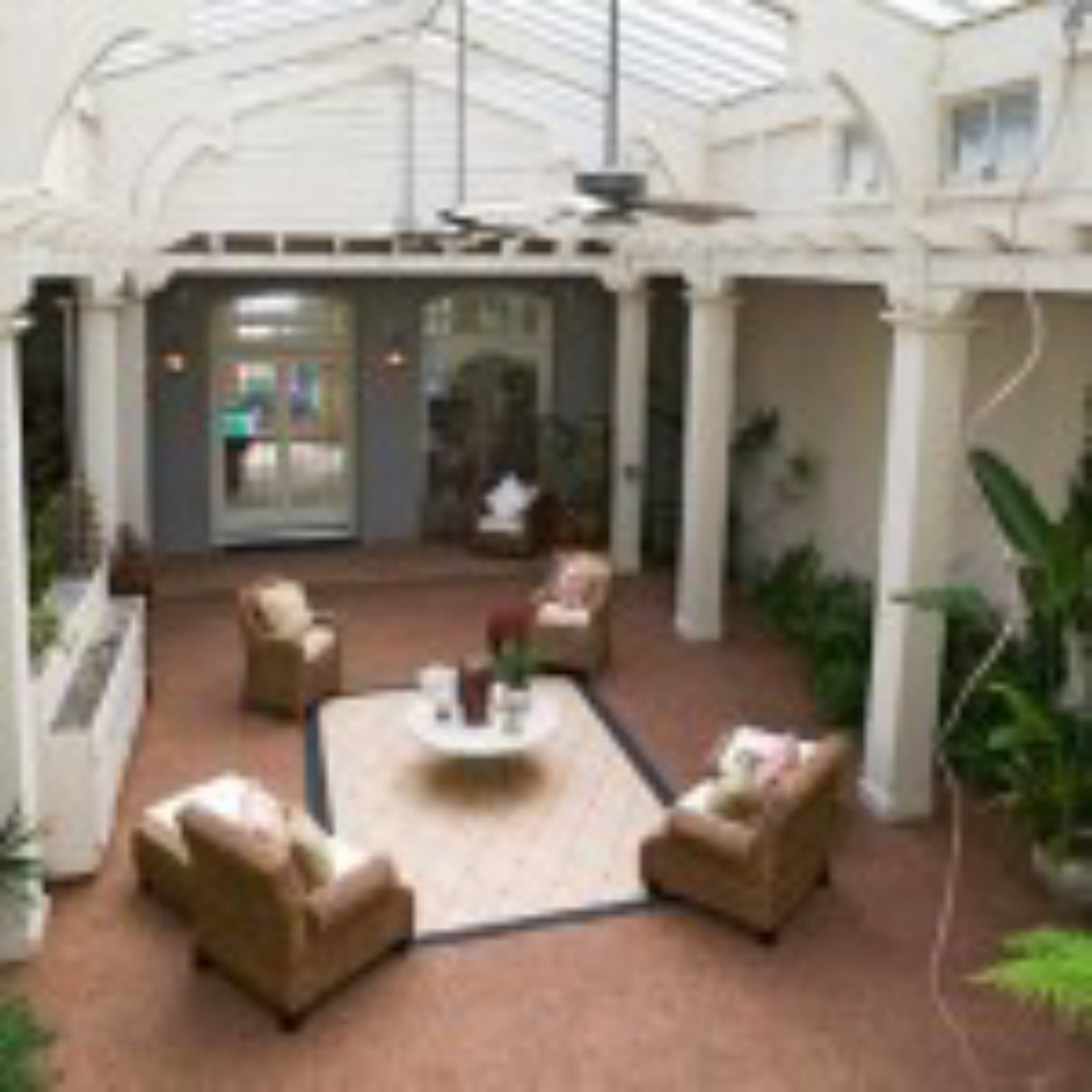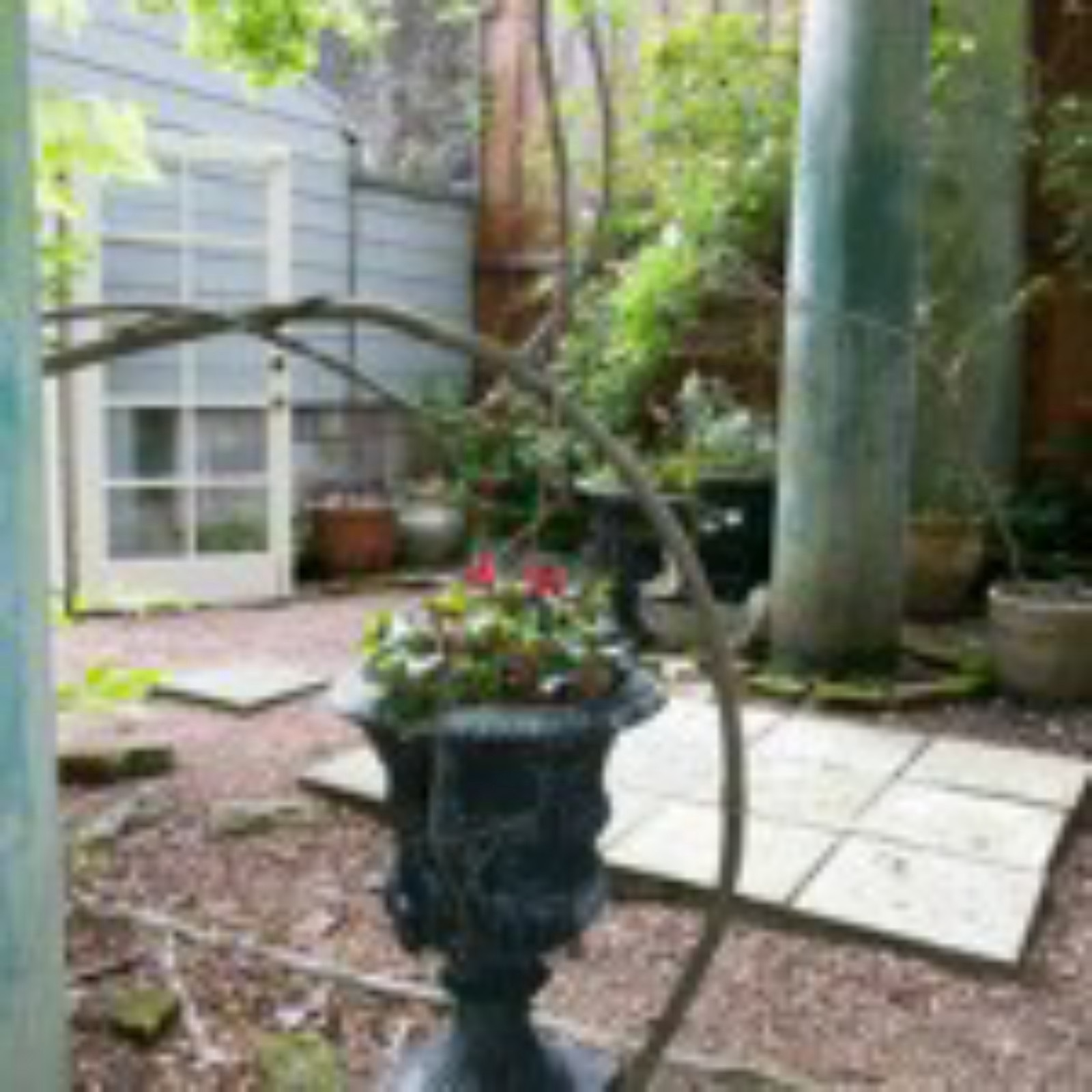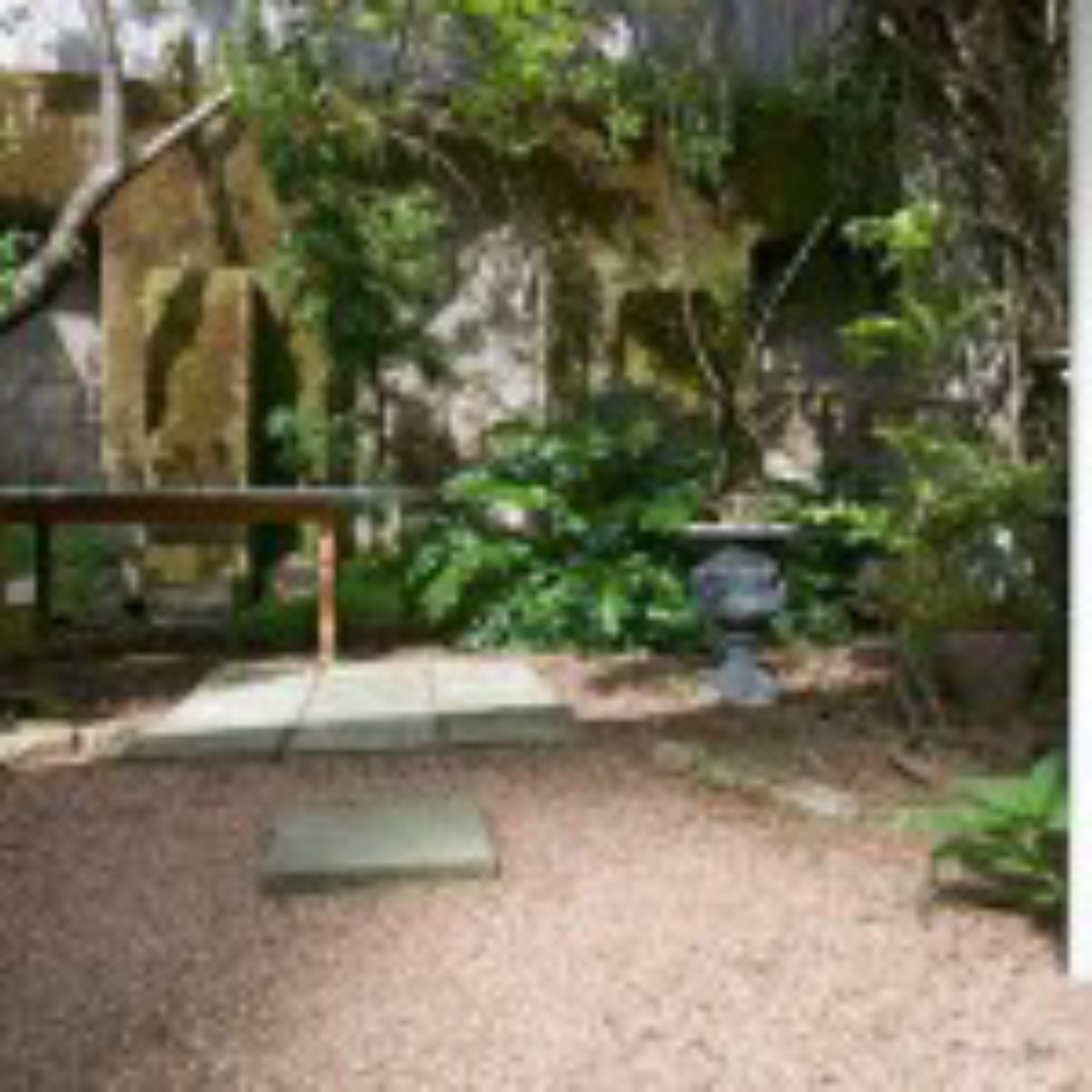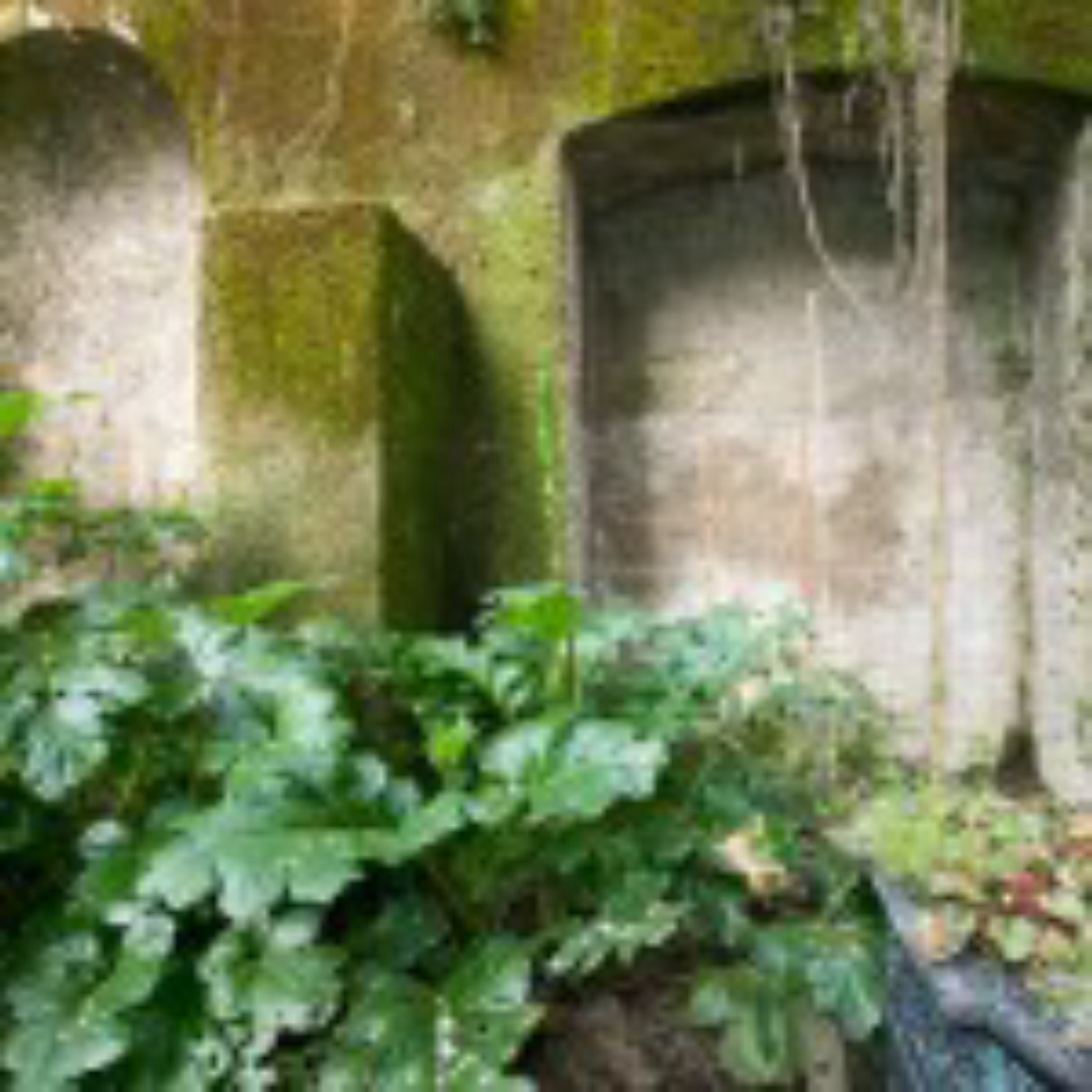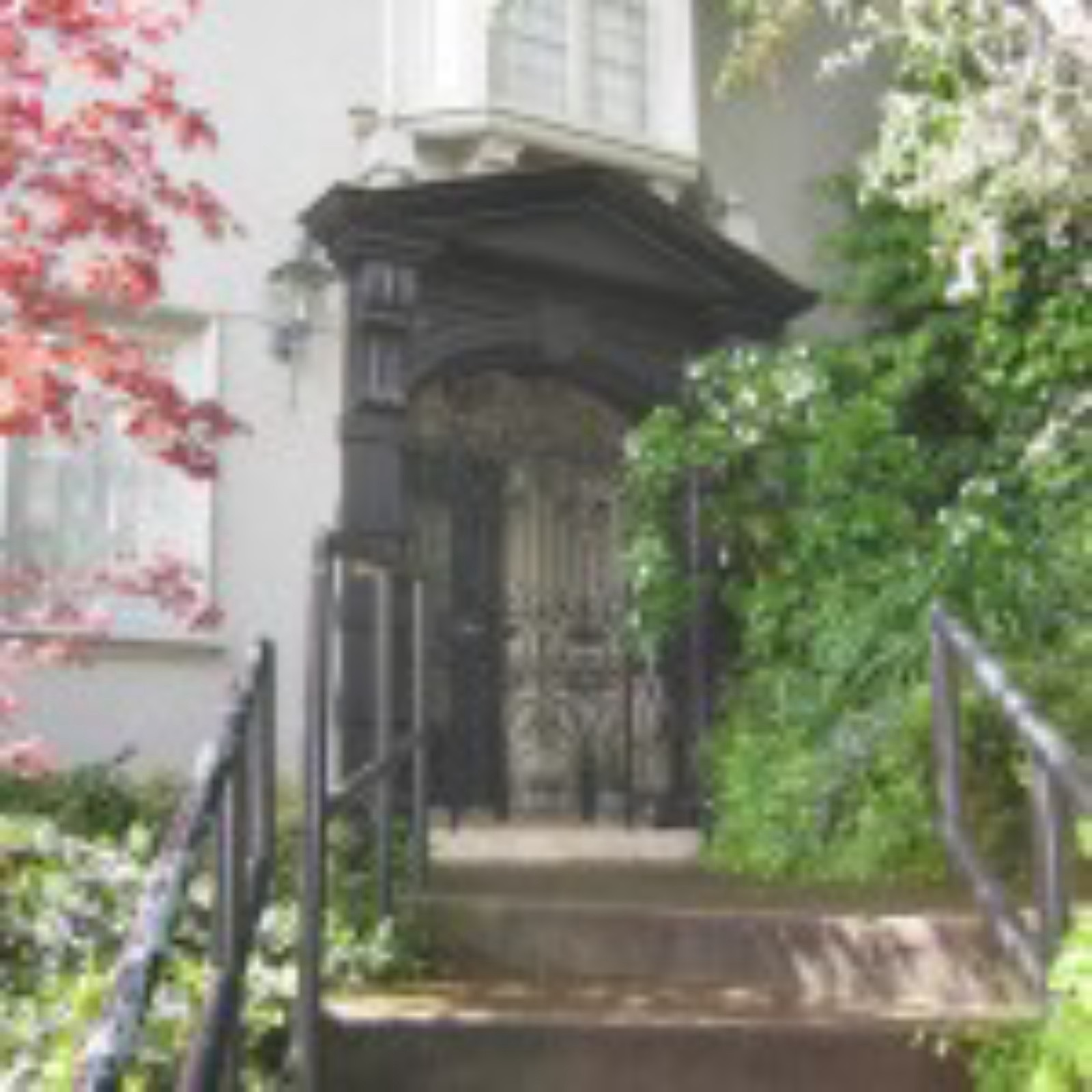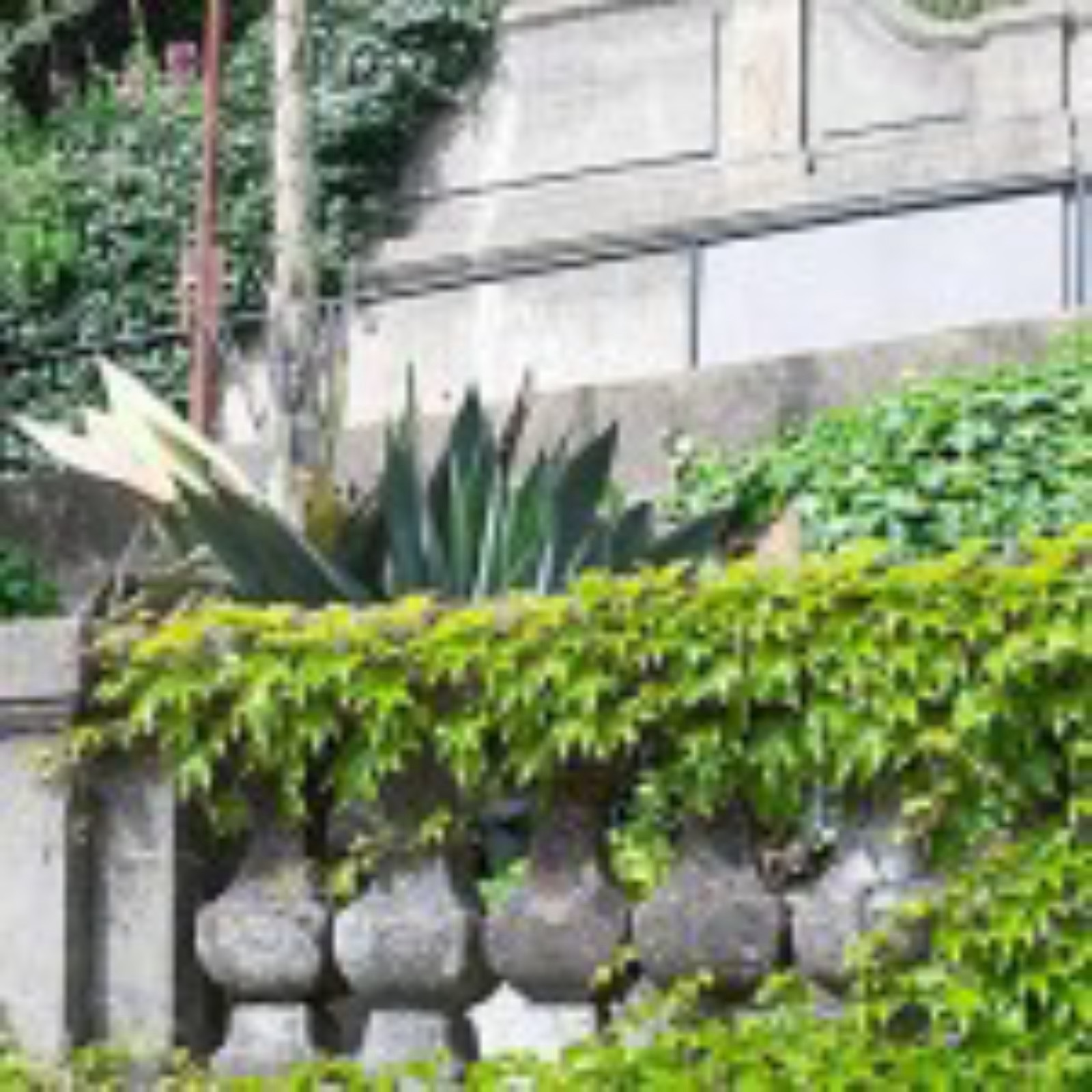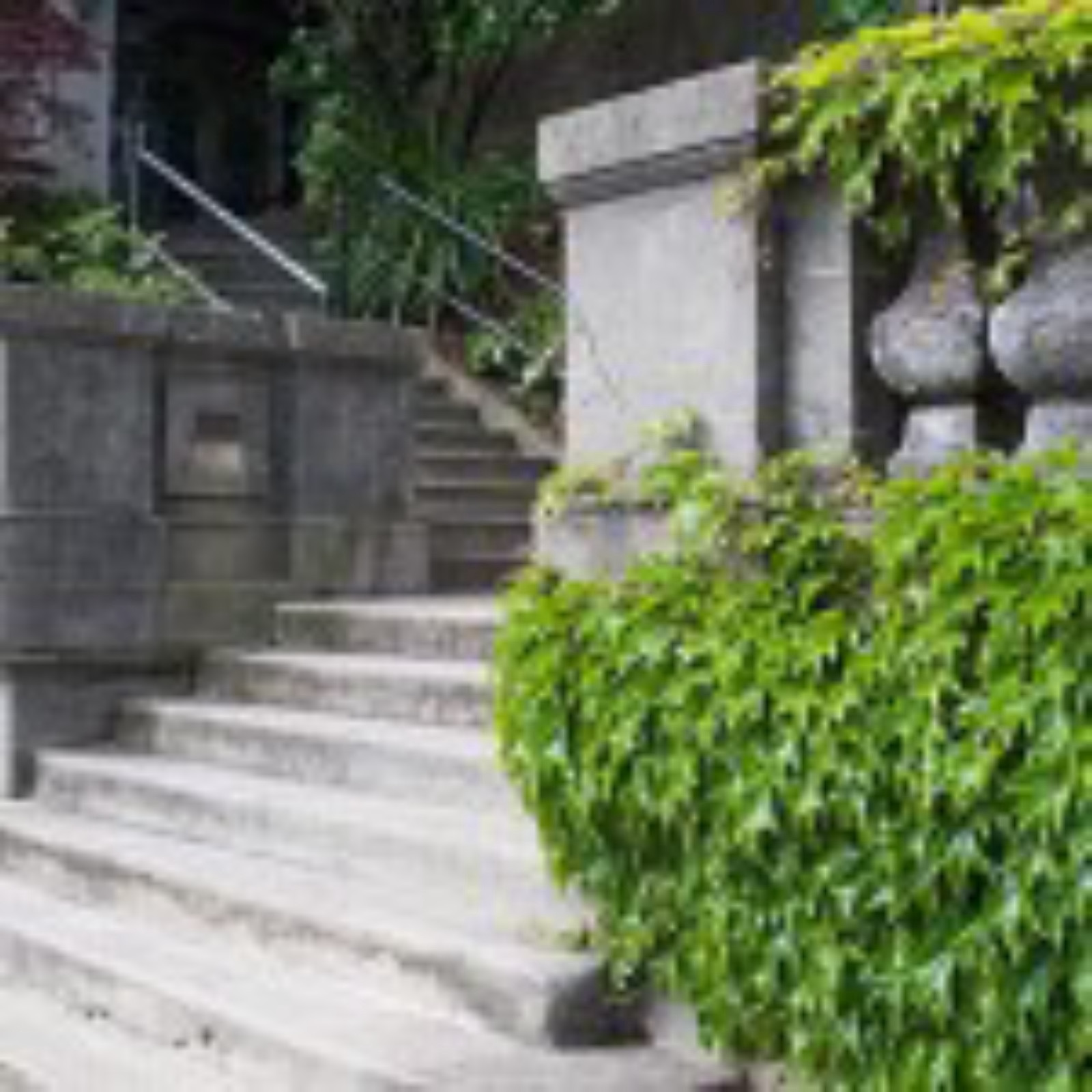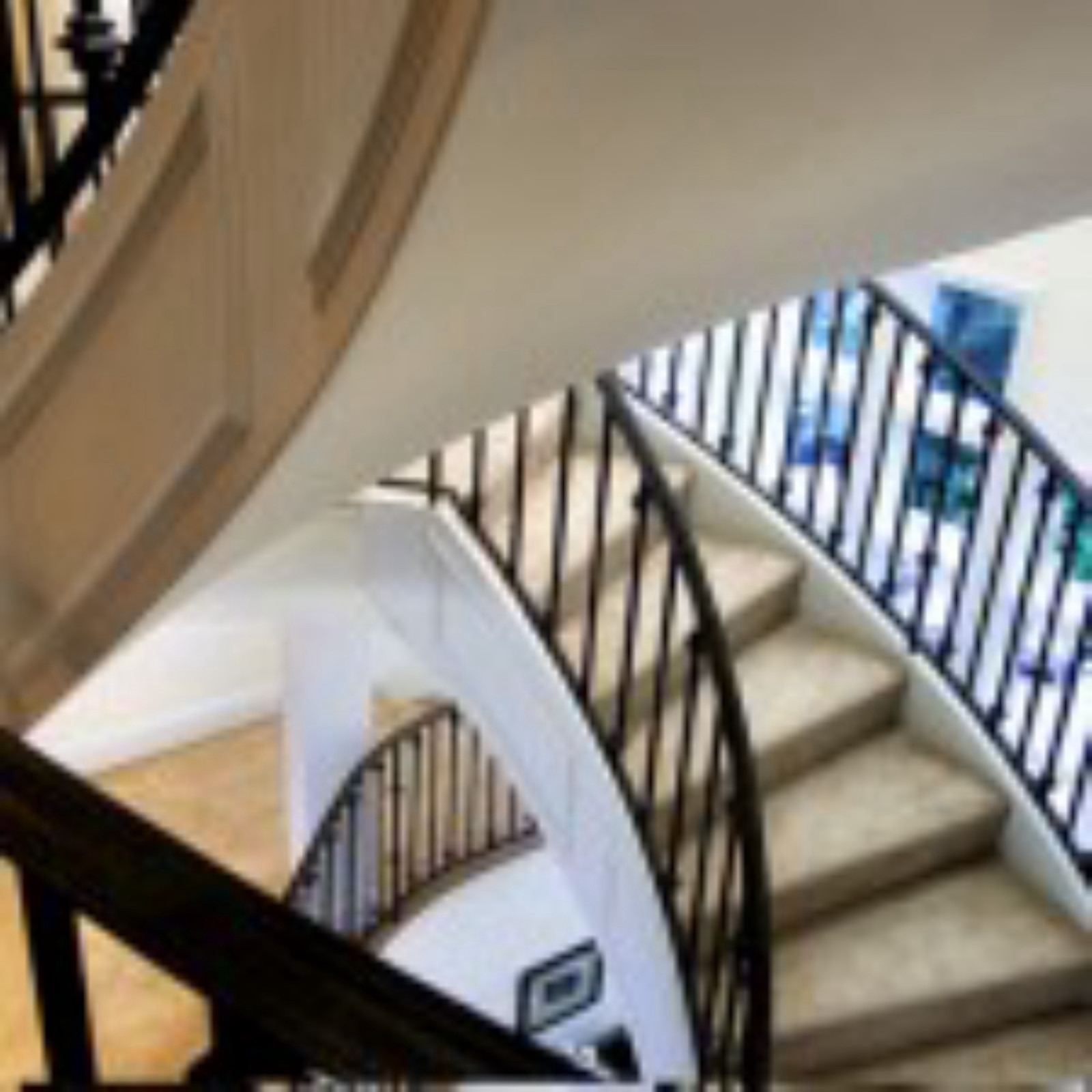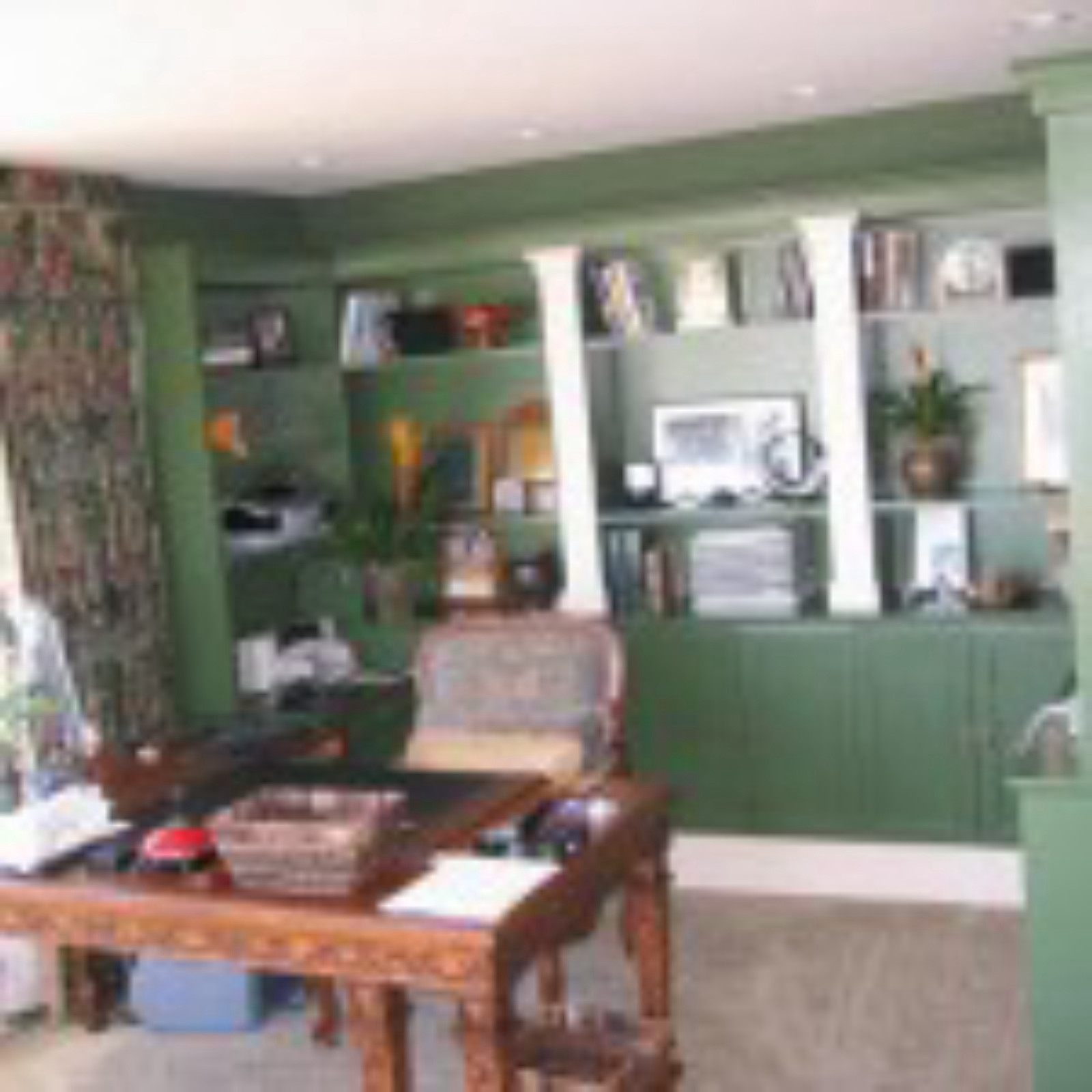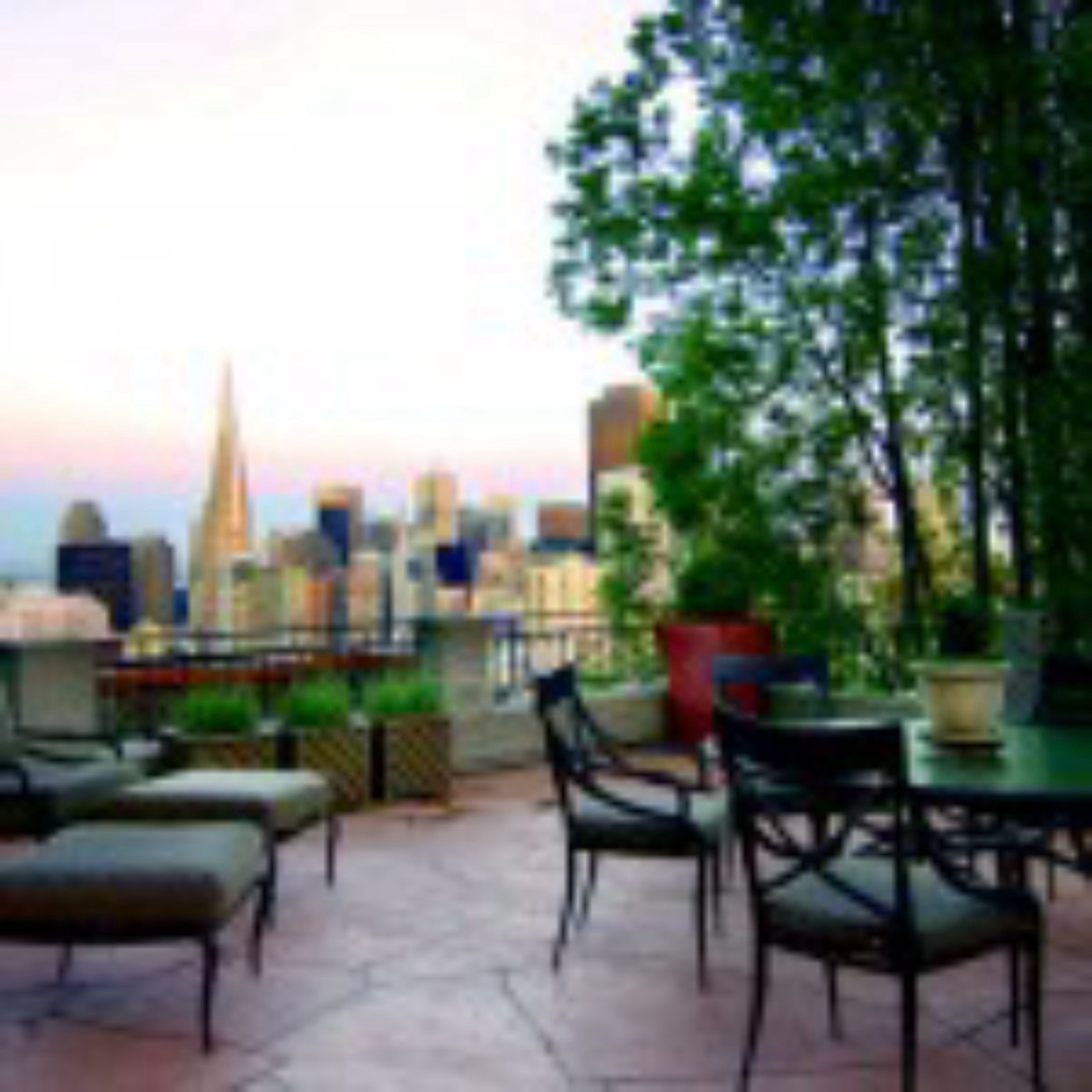Entry Level
- Famed Vallejo Street pedestrian steps, designed by Willis Polk, lead to an elegant front door of iron and glass
- Large reception area with marble floors, leaded glass windows and cushioned window seats lead up to the grand marble stairway and living room
- Powder room
- Double doors open to a wide hall way leading to the media room
- Game room with leaded glass windows overlooks the city and gardens
- Beautiful glass roof conservatory has stairs up to a secret garden and stairs down to the garage
- Spacious, view guest suite
- Laundry center & storage
Main Level
- Light filled marble staircase opens to the painted wood-paneled grand ballroom/living room with soaring windows of leaded glass revealing the city and bay, a massive fireplace, and a balcony with balustrades
- To the west are French doors opening to a lovely sheltered terrace that expands the entertaining area or is available for private enjoyment
- Elegant formal dining room enjoys the open feel of the great room
- Interior French doors combine the formal and informal living spaces
- World class east-facing view kitchen has granite counters, hardwood floors, bleached wood cabinetry. Appliances include: Sub Zero refrigerator, wine refrigerator, U-Line ice maker, Thermador Professional Stove, with free-standing Thermador hood, muted sky lights, built- in Sharp Carousel microwave and convection oven., build -in warming drawer, double stainless sinks looking out to the Bay Bridge, plus a separate stainless sink, two disposers, Braun trash compactor, two Bosch dishwashers
- French doors open out to a sensational south-east terrace overlooking the bay and the pyramid, and a tall tree visited by the famous Parrots of Telegraph Hill
- A half bath is located off of the kitchen
Master Level
- Dramatic open staircase continues past the mezzanine library/office to the light-filled winding gallery hallway overlooking the lower levels
- Private home office (or sixth bedroom) with its own bathroom enjoys spectacular views and south-east light
- Huge master bedroom with a wood burning fireplace has views to the East and North
- Walk-in closet accommodates a large wardrobe
- Elegant marble master bathroom opens to a view terrace and boasts double vanities, a large shower, deep tub, and a private toilet and bidet
Top Level
- Spectacular view sitting area/gallery hallway
- Three bedrooms
- Three bathrooms
Fascinating San Francisco History
Russian Hill - Background
The Summit of Russian, Hill, rising to 360' above sea level, is unique in that its geography, historically and currently, provides not only a commanding view of the bay and near by urban areas, but also an isolated, park like presence in the city.
In his book, 1 From Russian Hill: The Summit 1853-1906 William Kostura explain Members of the building trades established a community here in 1853. By the 1890s the Summit was notable for its artistic groups and social life. Kostura quotes Emma Frances Dawson describing in 1896 a mystical sensation from her book A Gracious Visitation
I live in a region of remote sounds. On Russian Hill I looked down as from a balloon; all there is of the stir of the city."
1As is in the past, Vallejo and Green streets turn into streets of steps between Taylor and Jones. The Vallejo Street architectural pathway, formerly a goat path, was designed by Willis Polk before the quake of 06 but was not completed until 8 years later. From the curved, balustraded carriage turnaround at the mid-block on Vallejo there descends easterly a stairway, also balustraded, which zigzags through foliage and terminates at Taylor Street, just opposite Coolbrith Park. Everything about the summit is pedestrian oriented... to distinguish it from the surrounding city. Tall retaining walls on Broadway and Taylor streets define the boundaries of the summit, setting it apart physically and giving it a fortress-like aspect.
In 1890s the Eastern Slope of Russian hill had become more urbanized and was settled by Italian residents. The Vallejo Crest remained unique, but was 1filtering down to less wealthy clientele. A sort of faded gentility still clung to the best of the early elite districts. Houses on Russian Hill considered romantic due to their connection with the citys earlier days. People on the crest had a common distaste for Victorian architecture. The group that remained, including Willis Polk, reflected newer eastern trends and that of old buildings in Europe, an example being his house at 1019 Vallejo with shingled exterior resembled late-medieval urban houses in Brittany, France. Bohemia followed Willis Polk into his family home.From 1890 through the 1930s, Russian Hill was both the home and meeting place of the Bohemians; architects, writers, and others who met frequently to engage in discussion, collaborate and party.
House Construction - The Hanford House: Houghton, Sawyer Architect
1In 1905, within a few months of each other, Livingston Jenks and Robert G. Hanford began construction of their residences at the northwest and southwest corners of Vallejo and Taylor streets Simultaneously the stucco mansions rose up from the sandstone of Russian Hill, Jenks residence directly across the street from Hanfords, and one could easily imagine that they regarded each other, vying for supremacy as the largest in the neighborhood. From the street the two houses looked like fortresses.
2According to the National Register of Historic Places Inventory Nomination Form Architect Houghton Sawyer was known for residential work, particularly the apartments at 1001 California and 901 Powell, a house at 2518 Buchanan, and a major addition at 2220 Sacramento.
1"The original owner of 1001 Vallejo, Robert G. Hanford, was a businessman and mining promoter who, like Horatio Livermore, operated on a larger scale than most of his contemporaries even dreamed of. He made a fortune in 1901-02 when he acquired control of several large street railways in San Francisco and, with Tirey L. Ford, engineered their sale to an eastern syndicate for a vastly inflated sum. This consolidation of the Market Street Railway, Sutter Street Railway, and an interurban line as the United Railroads was called the biggest cash deal in the history of the nation. At the same time Hanford was active as a miner, dredging huge areas of the American and Feather rivers for gold deposits. He would later become active in electrical power and real estate."
1"Mrs. Hanford was a daughter of the founder of the Guittard Company, importers and dealers in tea, spices, coffee, soda, flavoring extracts, and especially chocolate. As Gabrielle Guittard Cavalsky, she first met Hanford at the Del Monte golf course, where she was playing a round. It was a picture that Hanford fell for utterly. Unfortunately, before they could marry, they each had to obtain a divorce. This they did in 1905. In preparation, Hanford informed his current wife by letter a man feels the grand passion but once in a lifetime, and I have it for Mrs. Cavalsky. Shortly afterward, Gabrielle obtained her divorce from dentist Valdamar Cavalsky."Although there are several legends of the origin of the house, Kostura writes: 1Now Hanford could build a mansion for his new bride on the Summit of Russian Hill. The most notable feature of the house may have been designed with her in mind. It was a huge wood paneled ballroom at one end of which was an elevated balcony. According to a later resident, the new Mrs. Hanford was an accomplished vocalist, and she was to sing from this balcony accompanied by musicians below."
1"The Robert G. Hanford house at 1001 Vallejo was begun a few months before the Jenks house ,and was still under construction when the latter was finished. Three stories in height, with an attic and a large basement story, it was built to the property line on both Taylor and Vallejo streets, looming ponderously over passersby. Like the Jenks house, Hanfords was finished in stucco. The material had often been used as a smooth veneer for brick commercial and institutional buildings in San Francisco during the 1850s and 1860s, but had virtually never been used on residences until the 1890s, and rarely then. Its use on the Jenks and Hanford houses in 1905-06 prefigured the stucco Mediterranean and pueblo houses that Horatio and Norman Livermore would build on Russian Hill Place, Florence Street and Jones Street in 1912-16."
1"Though built with similar materials, the two mansions looked quite different. Jenks residence had a southern European feeling while Hanfords had a more northern European look. The oriel windows were Tudorish, and crenellated at the top with molded supports below. The squared off gable facing Vallejo similarly conveyed a Tudor or medieval feeling. The windows were everywhere composed of many lights divided by leaded muntins, and made with fine craftsmanship. The entrance, which faced Vallejo Street and was reached by the goat path, was somewhat classical in style. There was a conservatory with a separate entrance down the hill on Taylor Street, where the north half of the Ranlett house had once stood. Its architect was Houghton Sawyer, who was then at the beginning of his career as a designer of fine residences and luxury apartment buildings." The San Francisco Water Department had a record of R.G. Hanford owner 1/2/06.
1The Hanford marriage would prove to be very short-lived, but no one knew that as the house neared completion and the couple prepared to move in. Scaffolding was up and finishing touches were being made to the exterior as the calendar page turned to April 18th.
The Vallejo Street Improvements (1914-1915) announce and enforce the separation of the district from the outside world, provide its only interior auto access, and contribute to its scenic greenery and beauty. They were one of Polks very few realized projects for city beautification. They were commissioned, not by the City which owned the land, but by the adjoining property owners, organized together by Polks patron, H.P. Livermore.
The Mysterious Years
Records indicate a transfer from R.G. Hanford to Clarence Grange D.O.K. 4/13/15 and a subsequent transfer from Clarence Francis Grange to M. OConnell 8/30/19.
Bohemian Salon
3According to Margaret Parton, in her book Laughter on the Hill, A San Francisco Interlude, the house remained empty for several years. "Then one day Satu Kelley; a Eurasian actor, drifted into town, spied the house, and conceived a great idea."
"Mr. Kelly rented the house from whatever corporation than had it in tow and sent out embossed invitations to one hundred leading San Francisco clubwomen. For only $5 an evening, he told them, they could listen to him read Ibsen in the majestic setting of the House of the Grand Passion. They were delighted at the suggestion, and the first evening scores of them flocked up the stone stairways to get cultured. What's more they bought season tickets in advance only $50 for the series."
"Satu didnt disappoint them. The musty ballroom was fitted with squeaking chairs which he had hired from a near-by undertaker, and over the mantel, elaborately carved with gloomy symbols, flickered a tiny alcohol lamp, throwing a wavering green shadow on (Satus) tuber-like face. In one hand he held a long white candle which glowed on the blood-red copy of Ibsen which he held in his other. The dowagers shivered with delight."
"All in all, the first reading was a great success. Unfortunately, the next night the ballroom mysteriously caught fire, and though it was only slightly damaged, Mr. Kelly claimed that the setting for his readings had been spiritually destroyed and he left town hurriedly, still in possession of advance subscription sales.
The Verdier Mansion 1919 -1953
Records indicate a transfer on 12/19/19 from Charles s. C. Sullivan to Paul Verdier, and then subsequent transfers to other members of the Verdier Family. When the property was sold in 1953, however, the Referees Deed named Paul Verdier, Alexandriene Verdier, Wells Fargo Bank & Union Trust Company, and Union Securities.
4"Dating from 1850 when Felix Verdier and his brother, Emile, prosperous French merchants, sailed into San Francisco, not to mine gold, but to sell baskets of champagne, casks of rare wines and barrels of brandy, Persian shawls,...petticoats...laces and silks; the Verdier family, founders of the elegant store Ville de Paris or The City of Paris have brought the good life to San Francisco. They represented savoir faire. Nora Leishmans article The City of Paris, printed in the Argonaut, stated that Paul Verdier took over management of the store in 1904 and retained management until shortly before his death in 1966. After the earthquake and fire of 1906, he moved the store merchandise into the Hobart mansion on Van Ness, then to Geary and Stockton. In 1918 the store was expanded, the beaux arts building containing the famous circular interior and dome, designed by architects Arthur Brown and John Bakewell, is retained by Neiman Marcus today. Paul Verdier was the most prominent leader of San Franciscos French community. The French government promoted him to Commander, highest rank in the Legion of Honor.
He served as Ambassador to the United States from Rumania to Monaco, was a Captain in the State National Guard, and President of the California Palace of the Legion of Honor. The Argonaut article quoted Emile Drevoir on Verdier and the Verdier Cellars: He was fantastichis whole heart was in the project. He had wines nobody in the city had. He knew more about wines than anybody I ever knew Verdier fought to prevent the possible reoccurrence of the curse of Prohibition.
There must have some wonderful parties at 1001 Vallejo Street. At some point the Verdiers, who had a ranch in Sonoma, moved from The Vallejo Crest and rented out the property.
The Dream House/Opium Den
3According to Margaret Parton, whose family moved into the house next door in the early 1920s, she "remembered looking through bushes up to the bulk of what, in my fanciful childhood, I liked to call the Dream House. Perhaps it caught my attention because of the flickering blue and green lights, which used to appear and disappear against the blackened window panes at night. They were like fireflies. One night, however, lights flared in the supposedly deserted mansion, and gunfire echoed down Taylor Street. After that there were no more firefly lights. Years later I discovered that government men, had traced certain well-known opium addicts to the house, where ingenious smokers had discovered a subterranean tunnel leading from the steep hillside into the subbasement. Equipped with Chinese mats, the tiny rooms made perfect cubicles for the addicts to steal furtively into the House of the Grand Passion to roll their little brown pellets over the shimmering blue flames of the alcohol lamps."
Artists Ball
Parton3 remembered when one of the annual artists balls, was held in the great ballroom. Every Hill in San Francisco was represented by a contingent of artists, all dressed according to some theme. Russian Hill, for instance, represented all the psychoses recently exposed by the new god, Freud Her favorite group was the Telegraph Hill contingent that came as goats, the traditional animal of the hill.
Sally Stanfords Brothel (late 1930s 1941)
According to Herb Caen5: Sally Stanford the famous madam. She had a huge house up on Russian Hill which was owned by the man who ran the City of Paris, a very proper fellow named Paul Verdier. The Verdier mansion was leased by Madam Stanford. And her girls were all like socialites, they were like Junior Leaguers. They had dusters and feather boas and they wore corsages and they acted like ladies. It was even on the Gray Line tour for a while! You could drop in if you were on the tour and meet Sallys girls.
According to the Junior League files6 the story goes, At that time, the house was frequented by men on the hill and was the scene of much drinking and gambling, etc.. A dent in the front door was supposed to have been made by police. On the event of this particular event the police werent raiding the joint, but merely wished to inform Mme. Stanford that the car of one of her gentleman callers was on fire."
7"Mr. SF.com Heart of the City," quotes Sally Stanford in her autobiography, The Lady of the House, I decided to move to another house in just as deluxe a district and set up camp where the neighbors had more to do than to peep through their draperies and put a stopwatch on the visits of my guests. Besides, the roof had begun to leak and there were complaints during the rainy season from those who didnt appreciate the sensuous delight of a trickle of water on a bare bottom.
Inter-America House
6From the Junior League files; After Mme. Stanfords departure, the house was rented to Mrs. K. Hope Hamilton for the sum of $175 a month in order that she might establish an Inter-American House (A marker on the Vallejo Street Steps at Taylor commemorates this use of the building). The purpose of the Inter-America House was to promote better understanding between the Americas. It was to be open to these people for their entertainment and comfort and to help them with any problems like the International Hospitality Center.
Junior Officers Club 1941-46
6"However, the war (WWII) started before this could be done, so it became an Officers club or retreat. Called Jr. Officers Movement, fifty five thousand men visited the center between 1941 1946. Anyone with rank of Ensign through Colonel or Captain was welcome and their superiors were welcome, but enlisted men could only provide music or other entertainment or help out in the kitchen. The late John Fitzgerald Kennedy who visited the center 17 times, and had wanted to give her a rather large donation to subsidize the operation. This could not be done, however, as there was a policy that no serviceman could pay for anything, nor could a contribution be accepted from him for the center. The center was open three nights a week until midnight, and volunteers ladies helped entertain the men. Married women could work, but were forbidden to dance. Mrs. Hamilton has hundreds of pictures taken at these parties and delighted in pointing out her pets; the most favorite of them all being Cora Wyman whose mother, she says, started the San Francisco Junior League. Cora also apparently wrote an article in our Spectator, April 1943, on the Inter-American House. Mrs. Hamilton stressed that her volunteers were socialites! The center was run on a shoestring - $16 a year from the carefully screened volunteers plus pledges from wealthier people all over the city who wanted to remain nameless. Funds were raised from card parties and such benefits. Mrs. Hamilton and her volunteers and visitors cleared some land in back of the house and built a Barbeque pit and area for parties. Various dealers through the city pledged meat for such occasions. For this occasion, Blums donated a huge cake worth $275 and Podesta donated spring flowers. The house has its own flag made by the center. The center also had an ecclesiastical light or eternal flame that burned in a special window and was visible from the bay to welcome sailors home, or to provide a last good bye for many.
In January 1944, H.R.H Juliana of the Netherlands visited the center. Detailed log of activities at the center is the property of Bancroft Library. The pictures and letters Mrs. Hamilton has in her possession were to go to the Bancroft library at her death."
Russian Tea Room
It appears that the conservatory was occupied separately. According to the footnotes of William Kostura, Jacues Schnier rented the conservatory first from Sally Stanford and then from the owner, Paul Verdier, during the late 1930s-early 1040s.
In her book, Parton recalls3, Here I was having tea with Mr. Schnier, in his roofed-over garden of the house of Grand Passion. The mansion itself had become some kind of club. His apartment, however, was not conventional. The floor was tiled, as it had been when the room was a garden, and the concrete walls were still covered with flourishing vines. At one end was a flight of steps leading upwards above a fountain, almost to the ceiling where the carved ends of the pergola supports rested."
9Carol Ann Rogers recalled, "When we first moved here, one of our neighbors next door who had lived here for 40 years remembers that the greenhouse was a Russian Tea Room: and she and her husband used to sit on their balcony and listen to the strolling violinists on nice evenings."
A House Big Enough for a Man, His Mistress and Wife
According to lore recorded by Junior League researchers, 6"Mrs. Hamilton was bodily evicted from the house when Mr. Verdier decided to install his mistress in it. The mistress was a music teacher of some sort and was quite fond of the house and insisted on living in it. After a period of time had elapsed, she established a young man on the upper floor. When Mr. Verdier got wind of this, he insisted on occupying the lower floor! Mrs. Verdier got wind of all of this and arrived from Paris to file for divorce. She also wanted the house or at least half of it, as was her right under the community property laws, so it is my understanding that the house was then auctioned and that it was at this time."
Sale to Catherine Doliani
6"The story goes that Mrs. Hamilton loved the house and wanted to buy it, but that she was out bid at an auction by that Catherine Doliani, a very colorful character." Title records show a Referees Deed recorded on January 13, 1953. 9Over the years she illegally divided it into a myriad of units, doing most of the work herself. She looked like a bag lady, if you ever saw her on the street, but she owned what became millions of dollars worth of real estate around the City, (She owned the house on the Lyon Street steps that Dianne Feinstein just purchased). She became senile, and her accountant and his partner began siphoning off the assets. One of them eventually married her in Nevada. They were eventually found out and sent to jail the newspapers had a field day with the story."
Restoration to a Grand Home
On May 27, 1992, the property was sold to Dr. and Mrs. Thomas Grotz. Dr. Grotz is a San Francisco orthopedist, and Lena restores properties. They did an extensive renovation of the property, restoring the mansion to its original grandeur while embellishing it to meet todays high-end standards, and adding to its structure. Shortly after completion, they moved on to another project.
San Francisco Home for Newlywed Nobel Prize Winner
In July of 1998 the home was purchased by Jan Blaustein and Myron Scholes who had looked for quite some time to find a wonderful home in San Francisco to begin their marriage. Although they would love to spend more time in the Bay area with their children and grandchildren, they are bi-coastal splitting time between New York and San Francisco. Jan Blaustein Scholes is a graduate of Boalt Hall at U.C. Berkeley and General Counsel of a global investment bank that requires her to travel to places far from San Francisco. Myron Scholes, who was awarded the Nobel Prize in economics in 1997, is a retired chaired professor at Stanford University and is co-managing partner of Oak Hill Platinum Partners, a $2 billion hedge fund located in Rye Brook, NY. He too travels around the world giving talks, participating in conferences and meeting investors, etc. Although they loved their Vallejo home, a smaller one suits them much better at this stage in their lives.
Their Vallejo Street Crest home has been a wonderful place to entertain small or large groups of friends. And, with large gatherings whether a group of over 150 associated with the Committee of 100 Chinese American families, a similar size group for Stanford Hillel, or smaller group to greet Sri Sri Ravi Sankar leader of the Art of Living Foundation or a new Dean of Boalt Hall, the house has been filled with joy and enthusiasm. With valet parking the movement from car up the stairs to the front door is seamless, and with smaller parties nine cars can find their way into the garage for those who cant find a spot on the street. Towards the end of one large party, the City of San Francisco gave the guests the treat of watching a large fire-works display. The views at night are awe inspiring even when having dinner alone. And, each year grandchildren and friends gather to watch the Blue Angels fly right over the house in May during fleet week.
The Scholes have gathered together a team of individuals who really love to tend to their home. Professor Scholes always jokes that many strangers seem to be coming and going while he is working in this study overlooking the Bay Bridge and San Francisco, a study that is set perfectly for Feng Shui principles (as is the rest of house), facing the east and the south and painted in dark green. 1001 Vallejo
Sources of Information
- Russian Hill: The Summit 1853-1906, Volume I of a Neighborhood History by William Kostura. Aerie Publications
- United States Department of the Interior Heritage conservation and Recreation Service: National Register of Historic Places Inventory Nomination Form
- Laughter on the Hill, A San Francisco Interlude by Margaret Parton Published in 1945 by McGraw- Hill Book company, Inc.
- The Argonaut: The City of Paris by Nora Leishman
- SFGate.com: Herb Caen, :A wide Open Town KRON 6/17/99
- San Francisco Public Library History Room File: Junior League of San Francisco research notes for Here Today
- www.mistersf.com/notorious/: Sally Stanford
- Personal antidotes of Carol Ann Rogers, Russian Hill Crest resident
- From Russian Hill Neighbors
